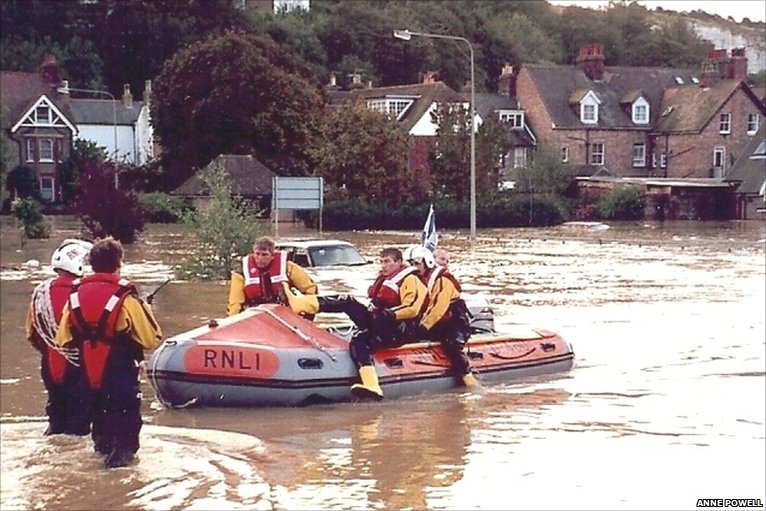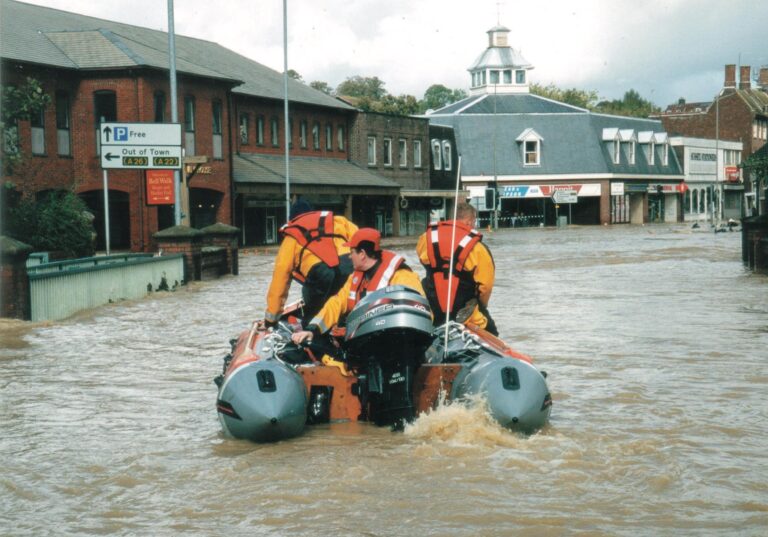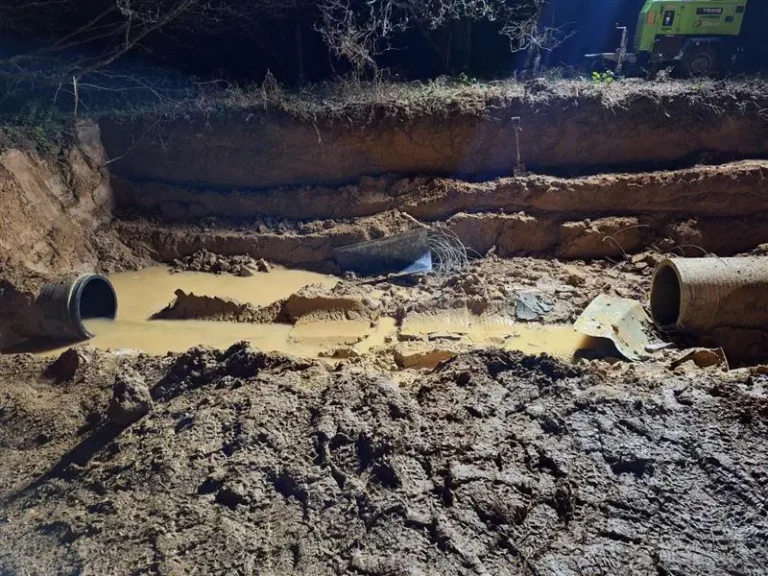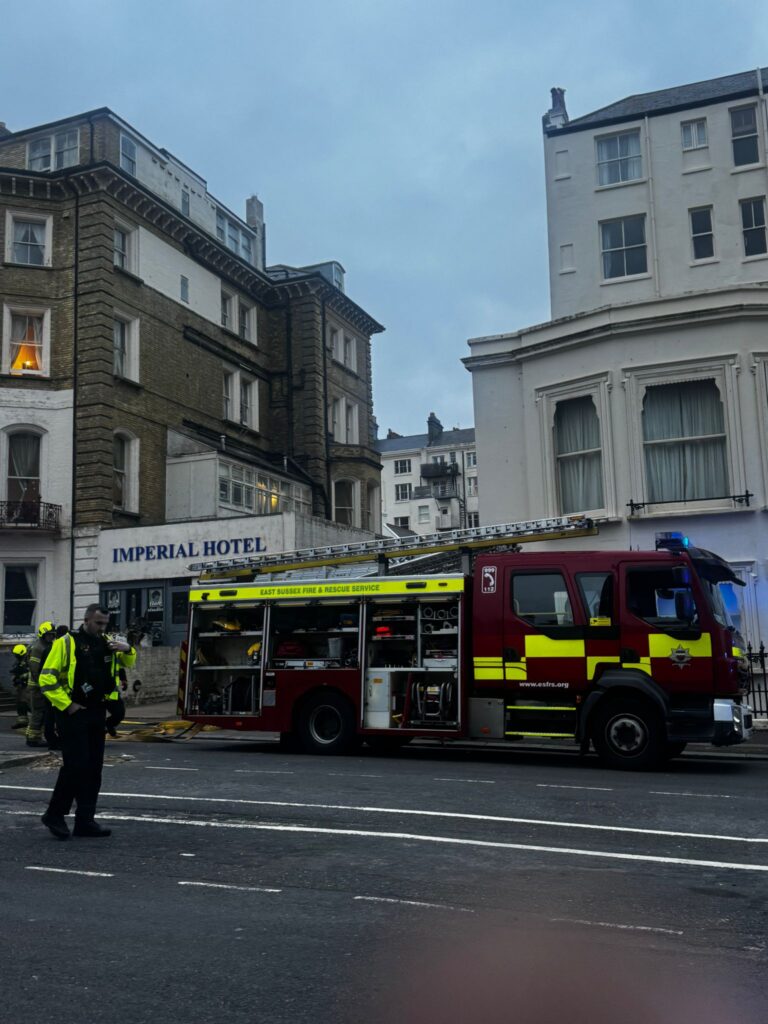This week marks 25 years since the catastrophic East Sussex floods of 2000, when relentless rainfall caused the River Ouse and River Uck to burst their banks, flooding Lewes, Uckfield, Barcombe and surrounding communities.
As floodwaters surged through towns and villages, RNLI crews from Newhaven, Shoreham, Brighton, Eastbourne and Hastings joined forces with the Fire Service, police, and other emergency teams in a major coordinated rescue effort.
Volunteer lifeboat crews battled freezing conditions to evacuate residents, rescue trapped pets, and search for missing people and livestock swept away by the torrent.

Roger Cohen MBE, now Lifeboat Operations Manager at Newhaven RNLI, was then a volunteer crew member with Brighton RNLI.
“Inflatable lifeboats were transported from nearby stations and RNLI HQ in Poole. It was cold and difficult work. Volunteers had to contend with dangerous conditions like smashed drain covers and debris while navigating the muddy water,” he recalled.
Shoreham RNLI also reflected on the extraordinary rescue operation, saying:
“Our crews spent 16 hours in cold and treacherous conditions contending with smashed drain covers and other debris whilst navigating the muddy water. One of the lifeboats in the rescue operation was sucked under Cliffe Bridge in Lewes by debris and strong current. Luckily, the crew managed to climb to safety.”
Among the most daring rescues was that of a pregnant woman in Barcombe, who had gone into labour but was stranded by floodwaters.
“Our lifeboat crew navigated across flooded fields and used a tractor to reach her home. She was taken from her house into the lifeboat, then handed over to an ambulance crew — and later gave birth to a boy she named Noah,” Shoreham RNLI added.
The 2000 floods became a turning point for the RNLI, prompting the creation of specialist flood rescue teams now trained to respond to similar emergencies across the UK.
Today, the RNLI honours the courage of its volunteers and the resilience of the East Sussex community — 25 years on from one of the region’s most challenging natural disasters.













Add your first comment to this post